From delicately stitched underground railway maps to beautiful artworks created from layered vintage lace and embroideries, Heidi Hankaniemi has always had a passion for making art.
With a lifelong love for handiwork, she has been able to develop a balance in her work, creating pieces of beauty each with a genuine concept behind it. Her mission is to rescue and restore value to discarded textiles, incorporating their history and the memories of their makers. She mends and joins these fragile items, fashioning them into exquisite contemporary works of art.
Heidi Hankaniemi was born in Finland, where arts education is highly valued. She grew up with an appreciation for art and the Scandinavian design aesthetic. She has lived in many places, drawing inspiration from each new home city, and is currently based in New York City. She has a BA (Hons) Degree in Critical Fine Art Practice from Central Saint Martins College of Art and Design in London and a Diploma in Fine Arts from Kanneljärven Opiston Taidelinja in Finland.
Having found a way to combine her fine art skills with a love of hand sewing, she began to consider how to make good use of the vintage textiles she collects. During a period recovering from brain surgery, working with these vintage materials became a meditative and restorative act. This was the start of her path as a vintage textiles rescuer.
Heidi’s work has been exhibited throughout Europe, at The Moscow Museum of Modern Art, The Metro Museum in Russia and in the Sol LeWitt exchange at the Massachusetts Museum of Contemporary Art. She has been featured in publications ranging from Architectural Digest to Vogue and Hello! magazines and her artwork is in the collections of art critics Jerry Saltz and Jan-Olof Mallander. A career highlight was when she went skinny-dipping under the moonlight in Sir Elton John’s Nizza pool after decorating for his party! Heidi has received a Textile Arts Center work-in-progress residency in NYC, awards from Finnish Cultural Institute in London and a Victoriastiftelsen arts scholarship. She has also been awarded funding from Taike (an arts promotion agency) in Finland and the Visuelt prize in Norway.
Read on to discover how her upbringing influenced her career and how her feeling of ‘itchy hands’ perfectly suits the tactile benefits of sewing. Learn how she was able to bring her passion for hand-made items into her fine arts practice, using stitch and vintage textiles. She shares her plans for the future; making use of her ever-growing collection of materials to construct larger scale works, introducing dyes and incorporating more drawing into her process.
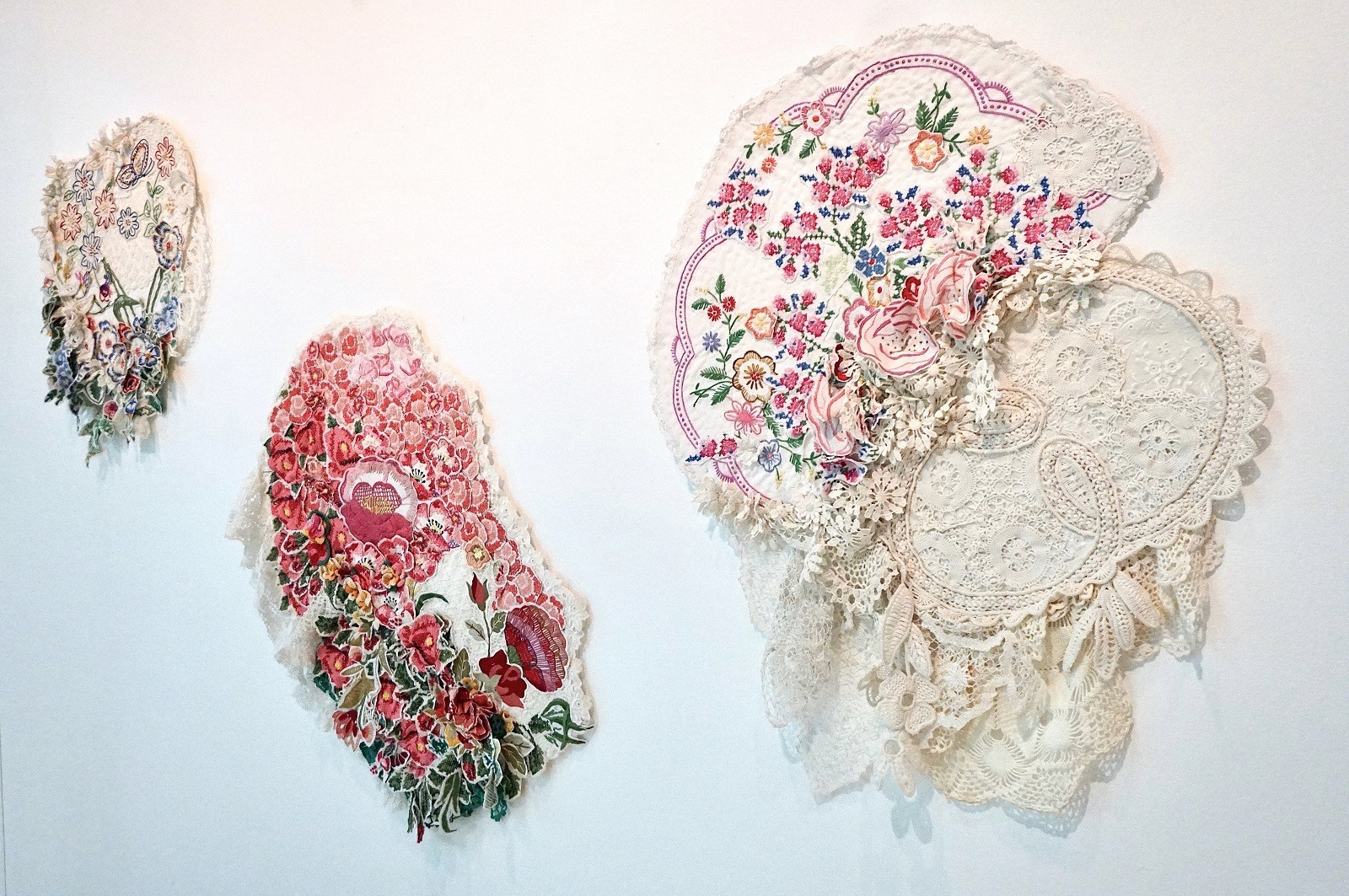
Following inner passions
TextileArtist.org: What initially attracted you to textiles as a medium? How was your imagination captured?
Heidi Hankaniemi: From as early as I can remember, I saw my mother and grandmother sew, knit and crochet.
Handiwork was always in my mind but it took me a long time for me to realise that I could also incorporate it into my fine art practice.
What draws me to textiles today is the tactile sensation. I have itchy hands and need to touch and make things. Although I tend to dress in black and lots of my work is monochrome, I really love colour. Working with fibres, tones and textures is deliciously satisfying.
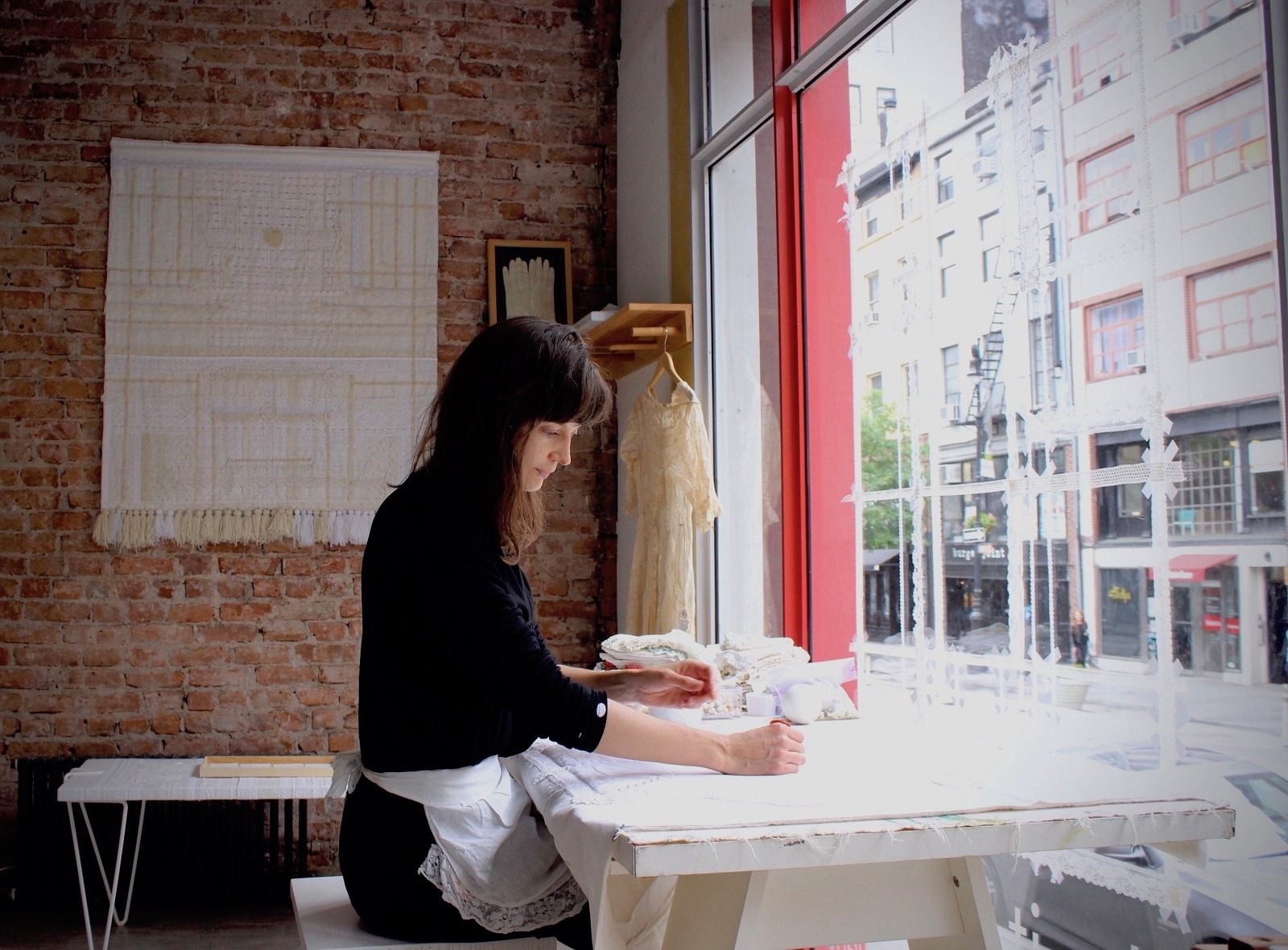
What or who were your early influences and how has your life/upbringing influenced your work?
I was born in Finland. My parents aren’t in the creative field but have a great appreciation for art, design and the handmade. They collect cool and pretty things. As children, we were “dragged” to museums, flea markets and such. We made Christmas gifts and cards and my grandmother made many of my clothes.
Interestingly, when I delve further back into the family history there’s been a strong involvement in industrial design. My great-grandfather headed the ceramics company Arabia. This company was founded by his father who worked for the famous Swedish ceramics company, Rörstrand. My grand-aunt was on the design team of esteemed Finnish designer Tapio Wirkkala. Swedish artist Hilma af Klint is a relative, too.
In my family, being artistic was seen a positive thing and very much encouraged.
The Scandinavian aesthetic has had a huge influence on my work. There are countless red-and-white Swedish huck weavings at the traditional family summer cottages and I remember the ryijys (Finnish long-tufted carpet hangings) at my grandparents’ place in northern Finland. There is something very special in the summer light and in the darkness of the winter there. It’s not until now that I actually notice the similarities between some of my work to the huck weavings!
I am a nomad. The US is the ninth country I’ve lived in and I’ve had the opportunity (and inconvenience) to start over many times. Each place has introduced me to something new.
We lived in Madrid for four years right where the giant flea market El Rastro is held. It became a huge inspiration for me and got me started on my collection of discarded textiles. This is the base for my work today. Toronto had me involved in some more commercial projects, creating installations for retail and interiors. In London, my network is a little more fashion-related. New York is everything one would imagine, both the good and the bad, but full of inspiration.
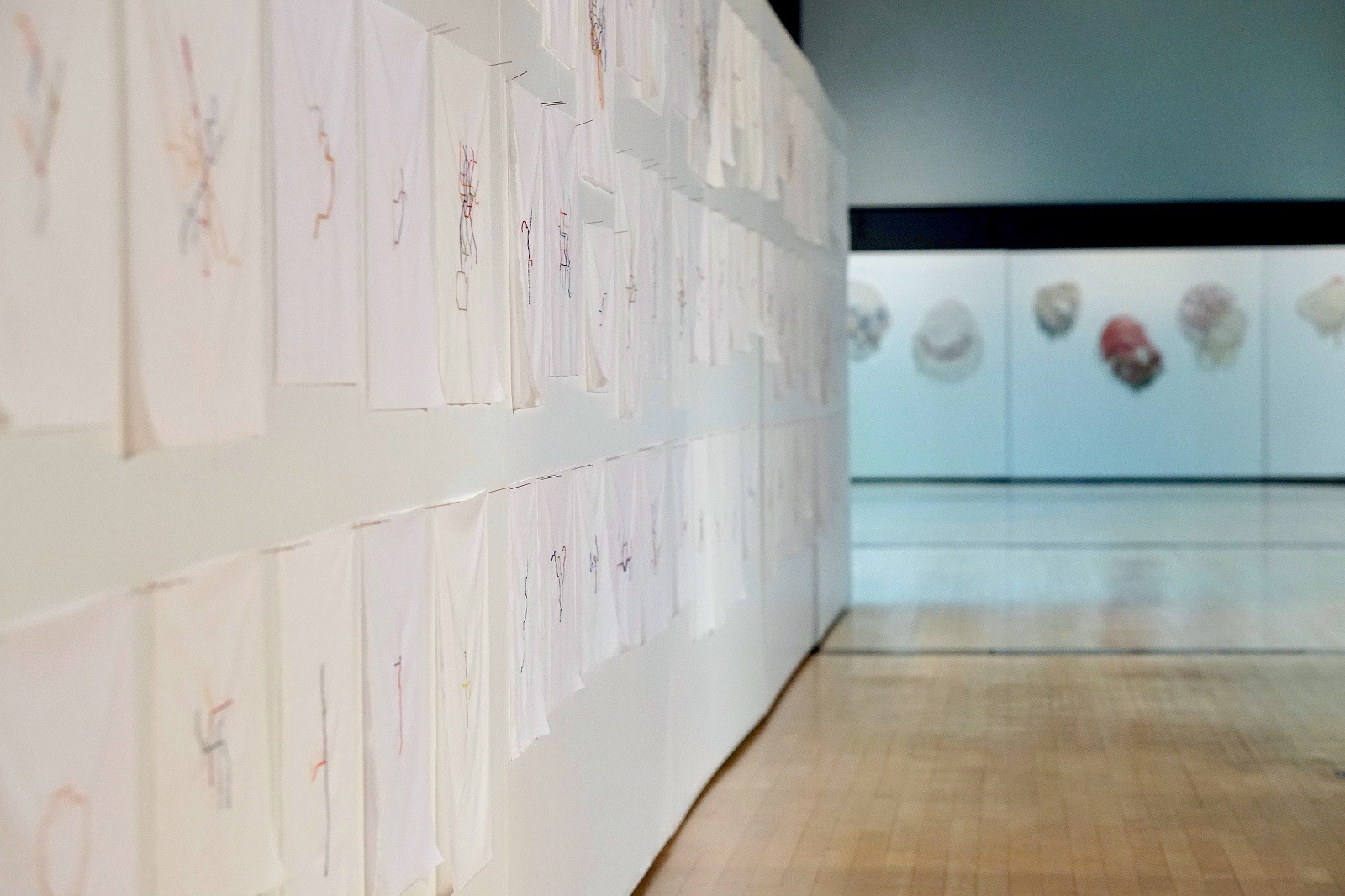
What was your route to becoming an artist?
There has really never been any other existence or a ‘Plan B’ for me. As a child, I was always drawing and making things. I was put into art classes and camps even before starting proper school at seven years old. I’ve only ever known that I was going to made art, in one way or another.
In hindsight, I’ve come to realise how lucky it was to grow up in a society which valued arts education.
Because I loved drawing I always assumed that I was going to be an illustrator. However, as a teenager, I discovered Fluxus, the action art community active in the 60’s and 70’s. I found it absolutely hilarious and fell head over heels in love with it. I ended up in London doing a Conceptual Art Degree instead.
To deal with my itchy hands I was always making things. Most of my friends have received a scarf or a quilt made by me. I did bring some textile works to class once but my “crafts” were not well-received there.
After graduating from Central St. Martin’s I worked on many interesting and diverse projects; jewellery design for Swarovski, decor design for Sir Elton John, performances, illustration, interiors, styling and so on.
My epiphany to use textiles as an actual medium in my work came while living in Oslo, Norway. I had a six-page illustration commission for a magazine with the theme speed. I was embroidering something for myself at the time and was asked to embroider something for the magazine too, so I backstitched six city underground railway maps. It felt fascinating to use an intimate, slow technique to describe large-scale, high-speed public transport systems.
Then I stitched some more maps; the cities I’d visited, would like to visit, cities friends had been to. Eventually, eight years later, the project covered all of the underground maps in the World, 148 of them! I find it amusing that my map of Cairo was stitched on a train in Norway, Osaka on the way to Toronto!
“Metro” has since been exhibited in Russia at the Moscow Museum of Modern Art and at St. Petersburg’s Metro Museum, at a number of galleries in Spain and as a solo exhibition at the Embassy of Finland in Washington D.C.
At this point in my career, I started properly researching and studying the significance of embroidery, the historical value of women’s textile labour, the Subversive Stitch and so on. It made sense to me and my work has been predominantly textile-based since then.
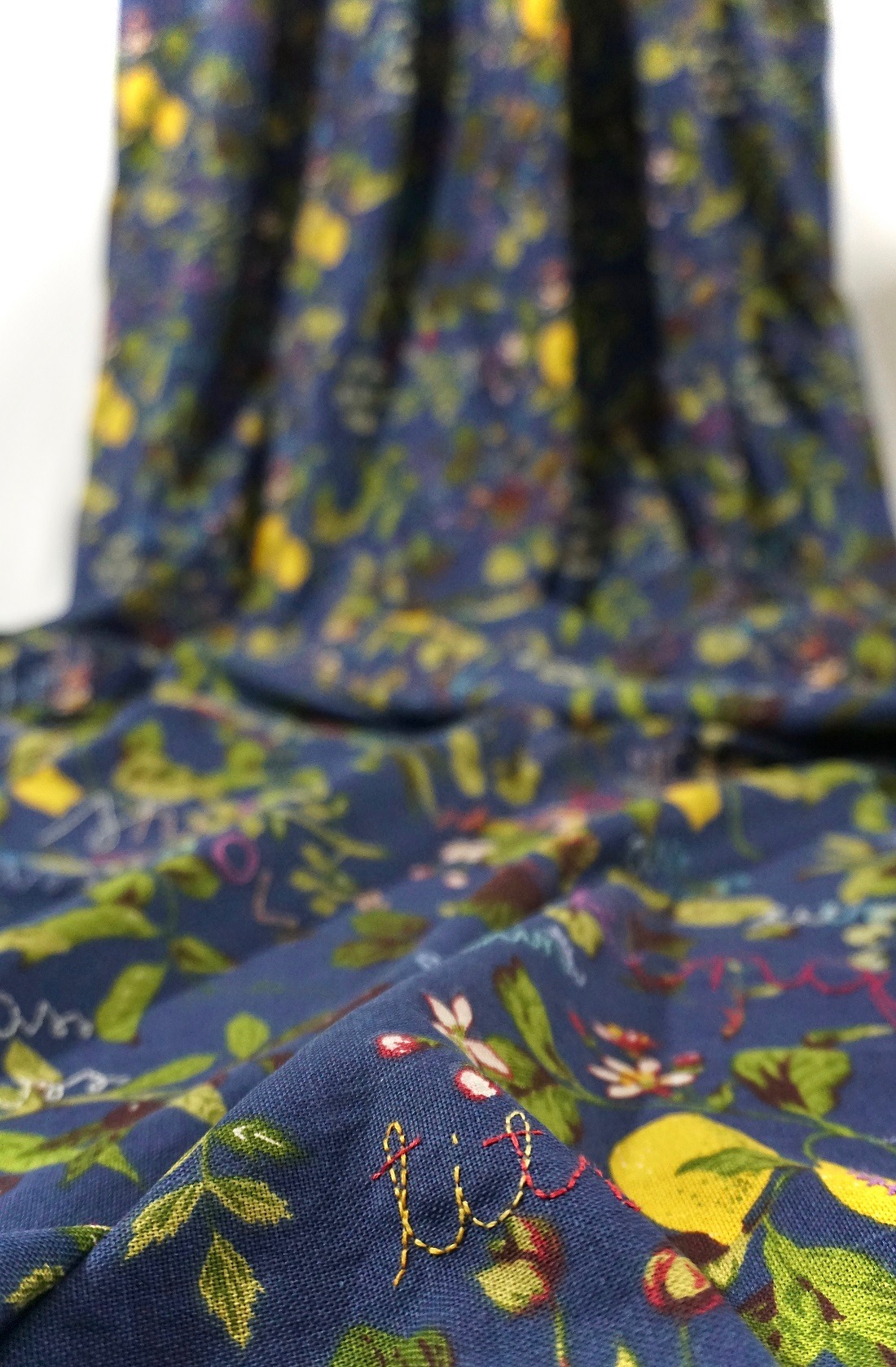
Let the fabric speak to you
Tell us about your process from conception to creation
On occasion, I surprise myself by coming up with brilliant ideas when under pressure, but if left to my own devices I take a very long time mulling over ideas. I usually get stuck on a sentence or a thought and brew it until I come across the right context to develop it further.
It can take years!
I was obsessed with the thought of “Swearing Fields” (which I’d somehow coined from the title Killing Fields) and spent years waiting to come across the right field-like fabric to embroider swearwords on. I never found the right one but found a cool fabric with lemons on it instead. The Swearing Fields idea became the Sour Curtain. This then grew into the Feeling the Blues room, which was recently (partially) exhibited at a gallery in Upstate NYC.
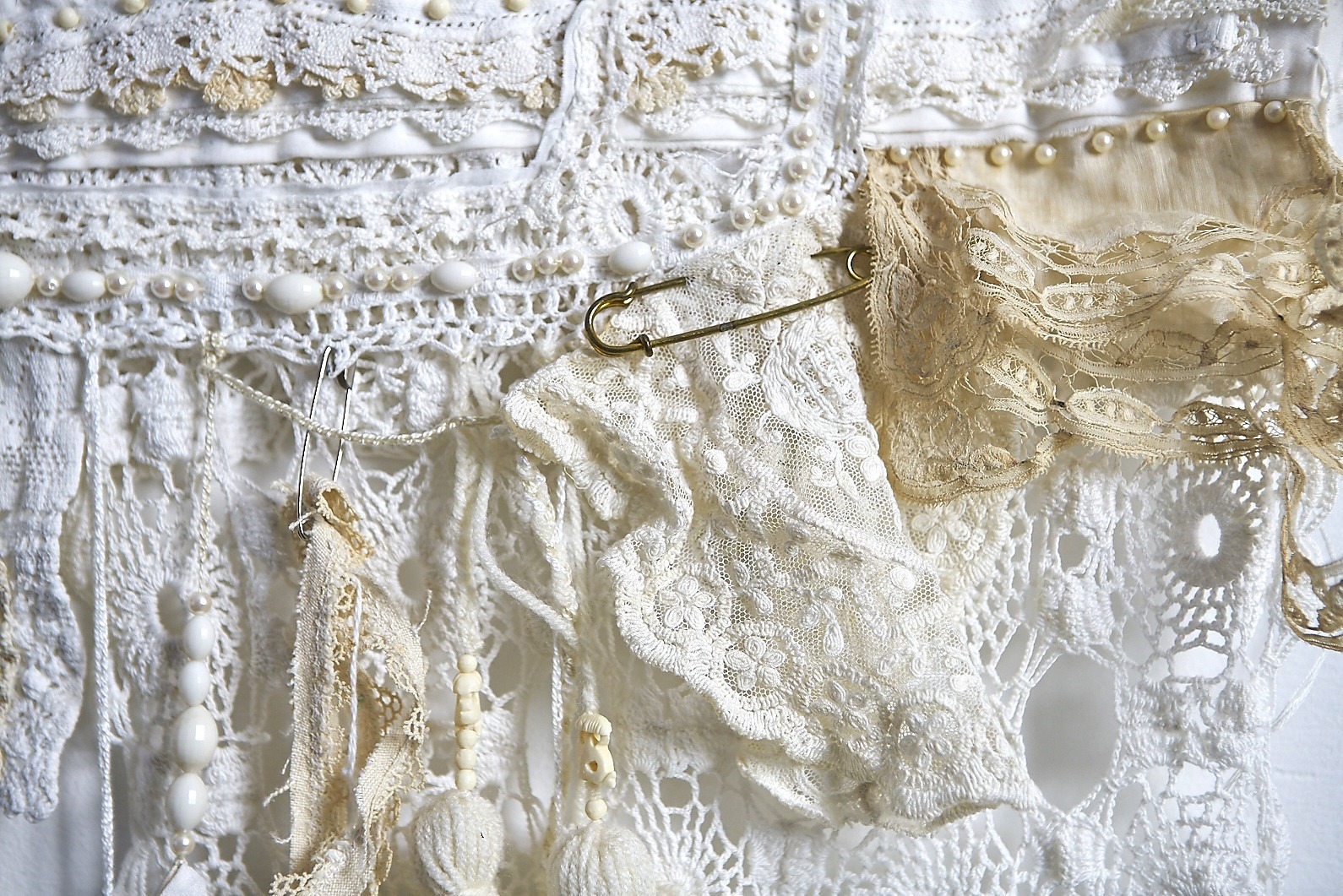
Tell us a bit about your chosen techniques and how you use them
Working by hand is very important to me.
Textile Arts historian Jasleen Dhamija says: “Each time the needle pierces the cloth the fibres absorb the essence of the maker.”
The belief that handmade objects have a physical memory is the foundation for most of my work.
The act of sewing, piercing the fibres, allows me to create both a physical and an emotional bond with the material.
Stitching the Metro maps transports the underground railway systems through my hands, merging me with them, for the duration of the sewing. Intimate manual labour connects me to each city like the concept of flâneurism, the observations made by strolling through giant cityscapes.
Working with vintage materials feels very significant to me. I’ve collected damaged and discarded materials from across the World, created by anonymous women (and men). Each of them is specific, depending on their history which I either know to be true through their source or which the fabrics tell me through the evidence of a previous life; the techniques used, the mending of the holes, the stains, the wrinkles.
I interpret their narratives and aim to give the textiles a new existence and a new value as contemporary works of art. I construct, mend and sew them into larger tapestries and installations.
I find it especially meaningful to work on commissions. I’m currently working with a woman whose grandmother recently passed away, creating a wall piece from the embroideries that her grandmother left behind.
Also, it is important for me to keep the “circle” going; as many materials are donated to me I, in turn, donate a percentage of my sales to a women’s charity in NYC.
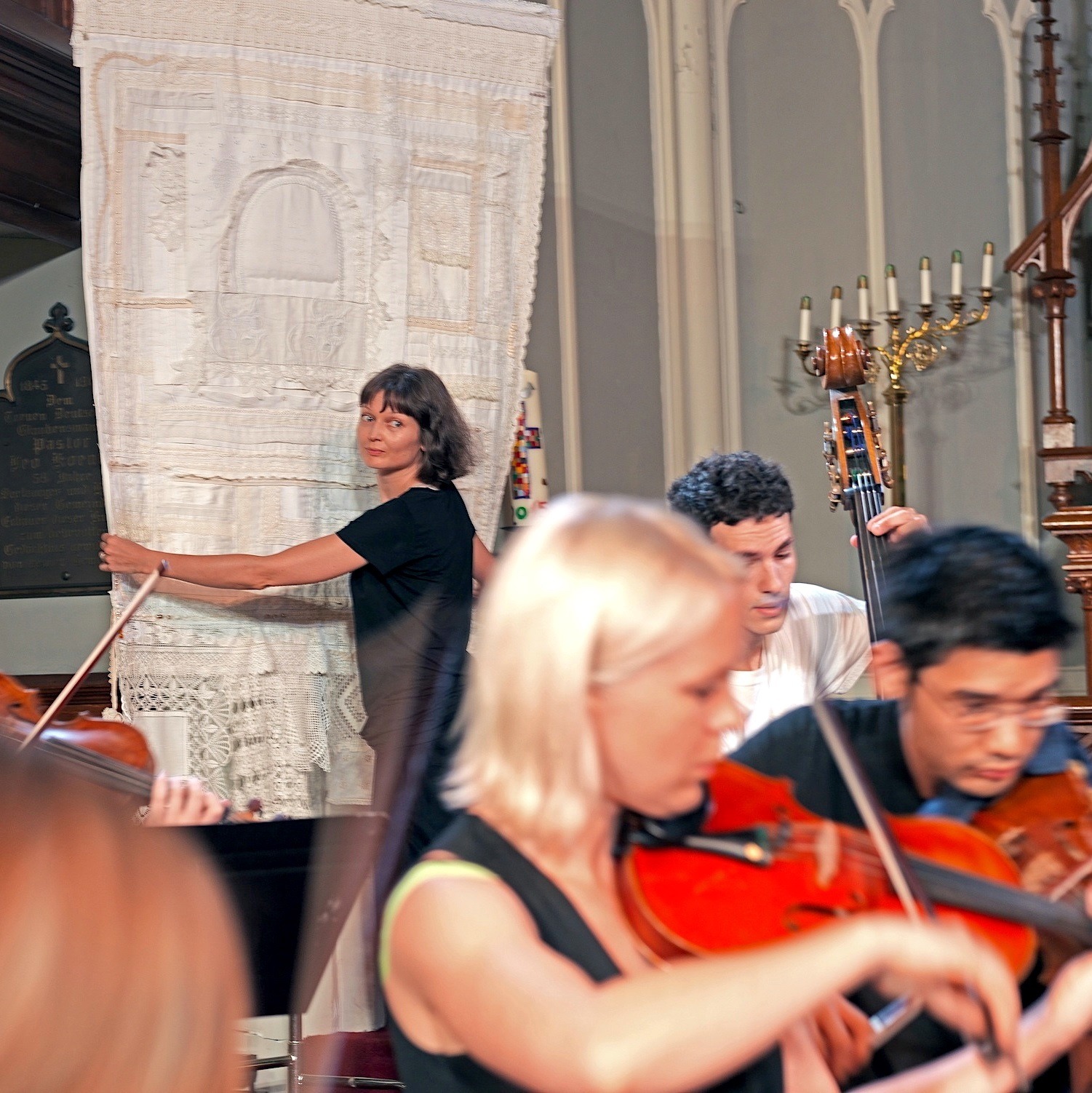
Restorative mending
Tell us about a piece of your work that holds particularly fond memories and why?
The Mending Tapestries is dear to me. The series started from a period of convalescence. In 2013 I had surgery for a brain tumour followed by two years of treatment and recovery. During this time I started going through my collection of vintage handiworks. I could sense comfort, strength and perseverance in them. Working with the materials became a beautifully significant and meditative process. I was mending and joining together the textiles and their creators while mending myself.
The Mending Tapestries were first exhibited at the Church of St. Paul in Manhattan as the Visual component for the Chelsea Music Festival 2015. That my first entry back out into the real world after my illness happened to be through a church, and with these specific works, felt symbolic and incredibly powerful.

How has your work developed since you began and how do you see it evolving in the future?
My work has become more unapologetic. I used to be wary of my work becoming too feminine, decorative or pretty. But I am female and my work reflects my femininity. I feel certain that the women whose handiworks I use would prefer their embroideries to be incorporated in works that are as beautiful as possible.
Before a solo show, I was once advised not to wear high heels to my opening. Apparently, people wouldn’t take me seriously, being a woman creating such delicate works. I wore heels anyway and it became a successful exhibition, regardless.
My textile work has evolved to a balance that I now feel quite satisfied with. I can create something visual which also has a genuine weight and a concept behind it. I feel that I have a stumbled upon a mission of sorts, as a rescuer of discarded textiles. I feel very honoured to work on commissions which are so sentimental to people.
My skills have developed technically as I’ve learnt how to work with vintage materials. It can be quite challenging as the textiles are often very brittle or discoloured.
My collection of materials continues to grow so I’ll definitely be developing these works for the foreseeable future. I see myself creating even more structural larger scale works. I’m experimenting with dyes and look forward to seeing where that takes me. Although stitching has taken over my itch to draw I do want to incorporate some drawing back into my practice.
Seeing how the art landscape, in general, has developed for the past few years I have been putting even more emphasis on the value of working by hand.
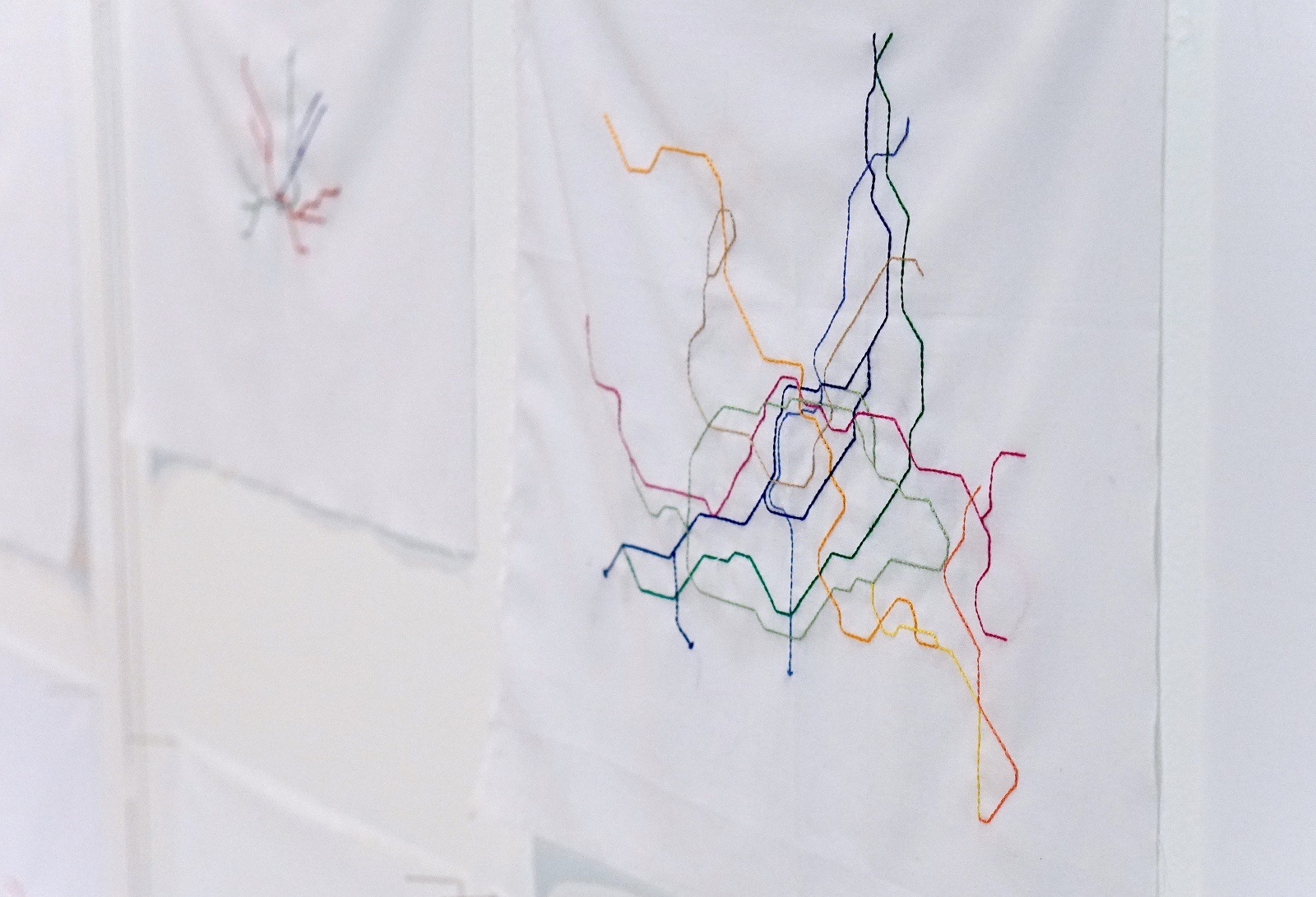
What advice would you give to an aspiring textile artist?
Become the best at being you. Spend time honing your craft. Stretch! Make an effort to learn new things.
Surround yourself with like-minded people but don’t compare your path to anyone else’s.
Keep moving forward. Say yes to most things.
For more information visit www.heidihankaniemi.com
Do you find stitching therapeutic, too? Let us know your experiences by leaving a comment below
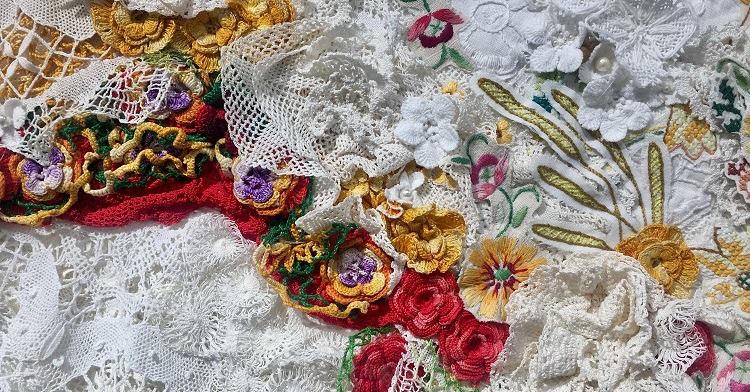
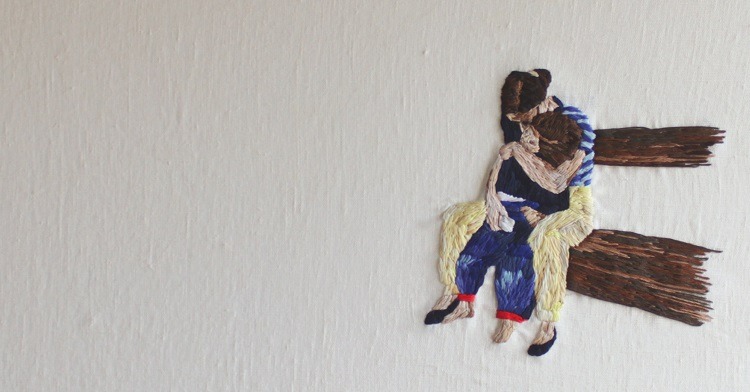
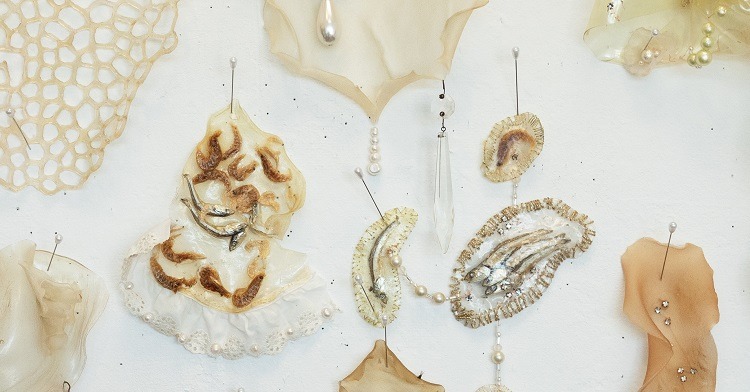
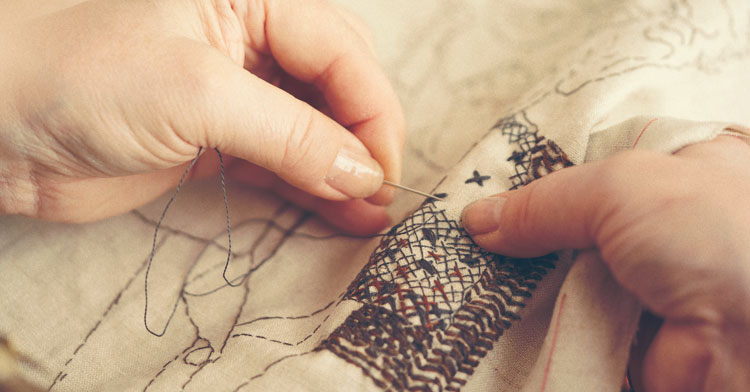
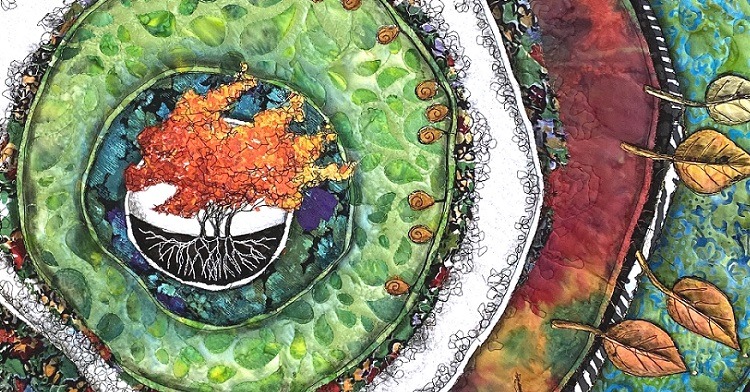
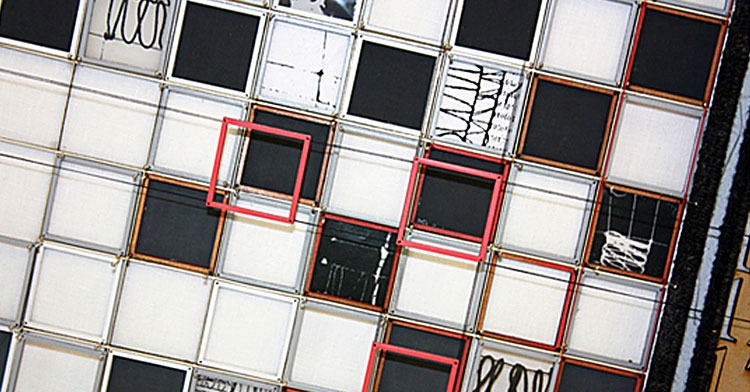
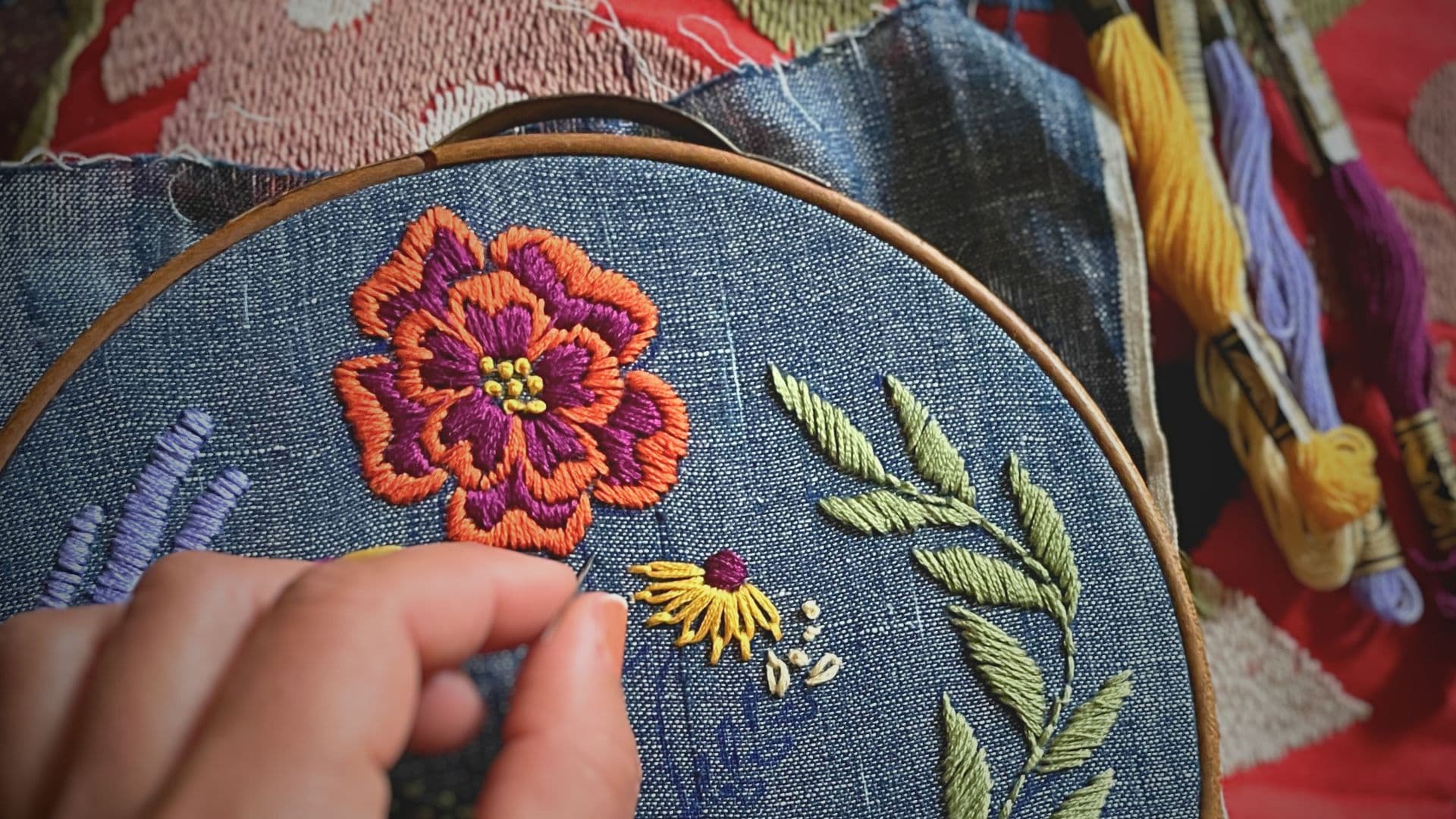
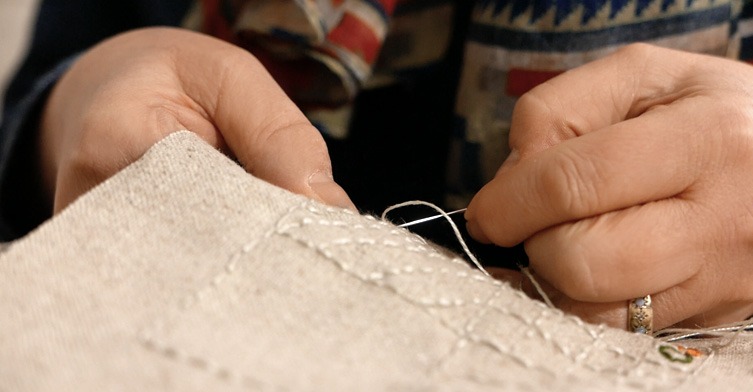
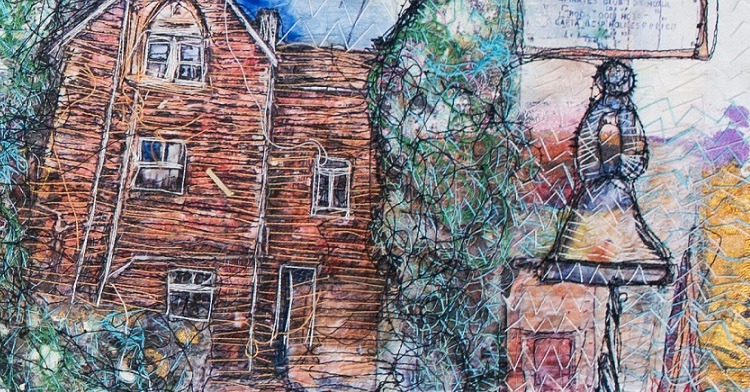
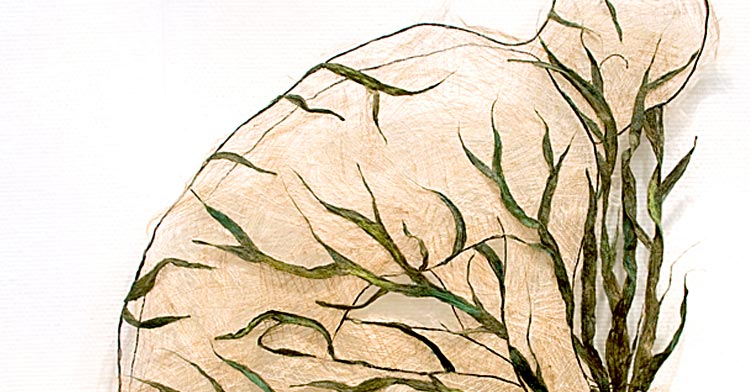
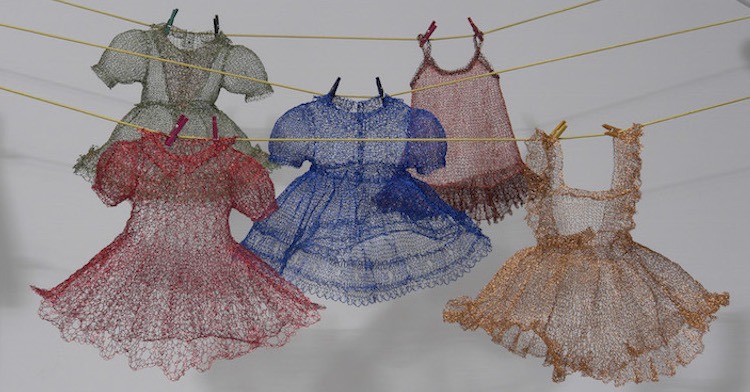
4 comments
Elizabeth Doolittle
Your work is exquisite and I love the idea that handmade objects have a physical memory. Thank you, ♥️
Margot
Beautiful, thank you
Kathleen McKindles
I, too love hand stitching. Mainly embroidery. I love color and get excited as I pick out the threads for my projects. I’m starting to make larger pieces and incorporating a collage of different fabrics as well as mixed media.
I’ve really enjoyed this article and relate to the wonderful pieces shown as well as the artist’s esthetic. I’m so happy she recovered from her surgery and can continue her work. An aside: I grew up in the upper peninsula of Michigan where there are many Finns and even Finlandia University!
Eileen McCray
Your work is beautiful.